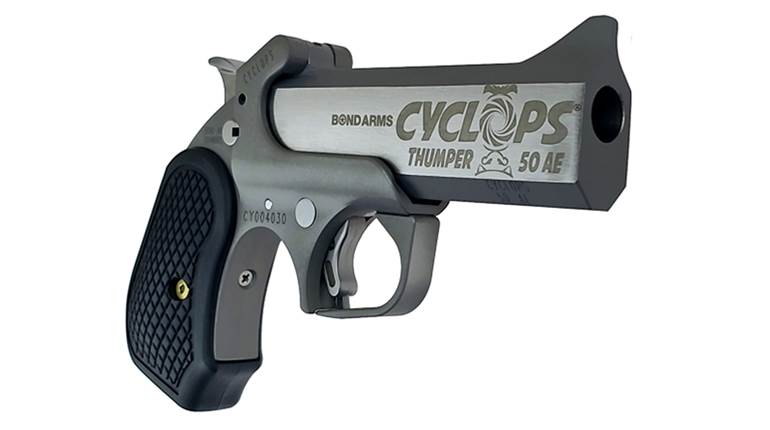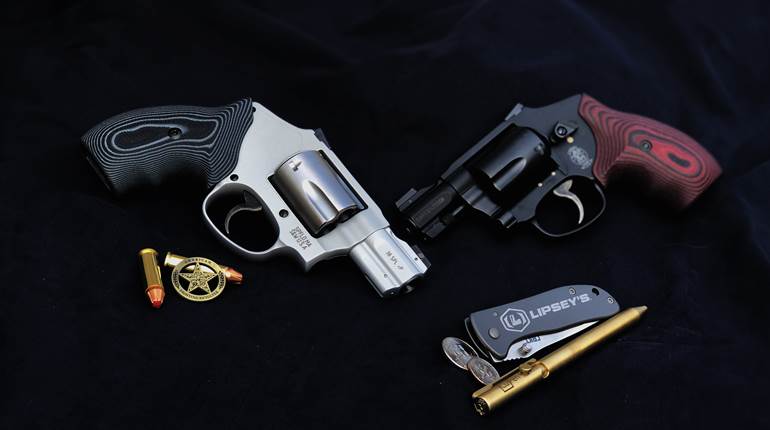
Any discussion on cartridges, bullets and terminal effectiveness usually devolves into debates, with shooters firmly ensconced in one of two camps. The first camp comprises those who believe that bullet weight and diameter are the most important factors. These people believe that a large bullet, with its greater mass, will penetrate deeply and reach a vital organ or the central nervous system. On the other side of the debate are those who believe that a bullet’s velocity is one of the most important metrics in terminal performance. These people hold the belief that a small hollow point bullet pushed to high velocity will expand reliably and cause more tissue damage than a slower bullet. Which belief is correct? Which is more important—expansion or penetration? 
Over the years, many methods for testing terminal performance have been used. Materials such as waterlogged newspaper and phone books, and gallon jugs filled with water or modeling clay have been used. Even pumpkins and watermelons have been shot with explosive results. While firing bullets into these substances can be entertaining, it doesn't provide a measure of repeatability, nor does it factor in the elasticity of living tissue. Ballistic gelatin made of organic material is currently accepted as one of the best methods to test a cartridge's terminal effectiveness. Constructed of animal protein, organic ballistic gel provides a realistic test bed. Properly measured, mixed and cooled, ballistic gel provides a consistent medium and allows for an “apples to apples” comparison of one cartridge to another. 
The Federal Bureau of Investigation uses organic ballistic gelatin to test self-defense ammo, and has established what are widely recognized as standards for ballistic testing. In order for a cartridge to be recommended by the FBI, it must penetrate between 12 and 18 inches in gelatin. It must meet these penetration specs after passing through a variety of materials such as automotive safety glass, building materials like sheetrock, and a denim and cotton fabric barrier referred to as FBI heavy clothing. These materials are representative of barriers likely encountered by law enforcement officers, which creates an engineering challenge for ammunition manufacturers. A bullet that penetrates well and expands impressively in an uncovered bare block of gelatin may become plugged with material during a barrier test. A plugged hollow point bullet may act like a jacketed bullet and show excessive penetration. Even if the hollow point cavity remains unclogged, enough velocity may be bled off after passing through a barrier that the bullet fails to expand, or loses enough momentum that it under-penetrates. 

Using the FBI’s penetration standards and the heavy clothing barrier, I recently tested four loads of .32 H&R Mag. and four loads of .327 Fed. Mag. in organic ballistic gel to see how these little cartridges fared when compared to more common .38 Spl. and .357 Mag. loads. Any discussion involving the concealed carry revolver is likely to focus on .38 Spl. and .357 Mag. Both cartridges are available in a variety of bullet weights and styles and both have a good reputation as “fight stoppers” in police and civilian circles. Small revolvers built for the .38 Spl., 38 Spl. +P or chambered to handle the full-power .357 Mag. cartridge are a mainstay in the concealed-carry market, with many models from which to choose. Models are available in traditional double-action and single-action formats as well as double-action only models with bobbed or shrouded hammers. Many of these handguns are available in blued or stainless steel or lightweight materials like aluminum, titanium or polymer. The snubnose revolver makes for a good choice when choosing size and ease of concealment.
The down side to these small revolvers is often one of ammunition capacity. Most, but not all, have an ammunition capability of five rounds, which is the tradeoff that accompanies choosing a firearm of this type for primary concealed carry or backup insurance. Another problem, particularly with the .38 Spl., is one of barrel length. A .38 Spl. load that produces velocities high enough to promote good expansion from a 4” barrel may drop below this expansion threshold when fired from a barrel only half that length. Increasing velocity to magnum levels might certainly help with expansion, but the increased speed also means more recoil and muzzle blast. It shouldn't come as a shock that most terminally effective .357 Mag. loads are also likely to produce punishing and unpleasant recoil.
So how do the .32 H&R Mag.. and the .327 Fed. Mag. compare to the more common .38 and .357? Please see the accompanying tables for test results. My previous tests of common .38 Spl.. and .357 Mag. ammo can be found here:
Testing the .38 Special Revolver
Testing the .357 Mag. Cartridge
A Smith and Wesson Model 432 PD was used to test the .32 H&R’s terminal performance while a Ruger LCR was used to test the .327 Fed. Mag. To establish maximum penetration and expansion parameters, two loads were fired into uncovered gelatin. These were followed by three rounds of each load through heavy clothing to establish how well each cartridge might fare against a fully clothed attacker. In addition, all eight loads were fired for accuracy at 25 yards using a Ruger GP100 with a 4.2” barrel to get an idea of each load’s accuracy potential. All loads were chronographed during testing from short and long barrels.
As the saying goes, the bullet that makes the biggest hole does the most damage. This statement has been accepted as fact by many of us and has driven the belief that cartridges like the .45 Automatic and .40 Smith and Wesson are the best possible choices for self-defense. While a big hole might be more desirable than a small one, this platitude doesn’t take penetration into account. According to the FBI, penetration of at least 12 inches is a most important concern and should be at the top of the list when choosing defensive ammunition.
I have to admit I was surprised at how well both the .32 H&R Mag. and the .327 Fed. Mag. did in these tests. Both are relative unknowns and have largely been overlooked by ammo and firearm manufacturers alike. But either one, with the right load, should make an adequate self-defense cartridge. Those who like the idea of a small pocket revolver for its safety, simplicity and reliability should welcome these. Those who are sensitive to recoil will likely find the .32 H&R Mag. more pleasant to shoot than most .38 Spl. loads. Those who are not as concerned with recoil and have no trouble handling a small revolver in .357 Mag. should enjoy the .327 Fed. Mag. and appreciate its additional ammunition capacity.
The choice of carry handgun is often a trade-off between size, ammunition capacity and terminal effectiveness. While a sixth cartridge might not seem like a dramatic increase, that one extra shot could make the difference between winning or losing a lethal force encounter. I've always been in the “bigger is better” camp but am now seeing the benefits of these small yet effective loads especially where ammunition capacity is concerned. 






































